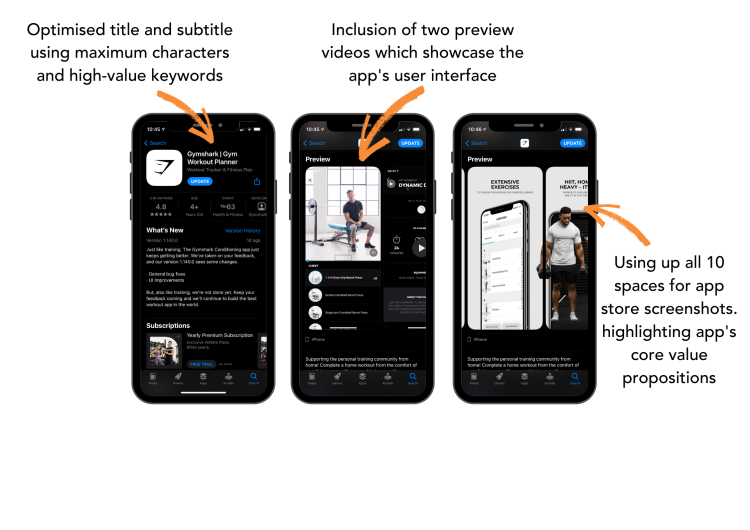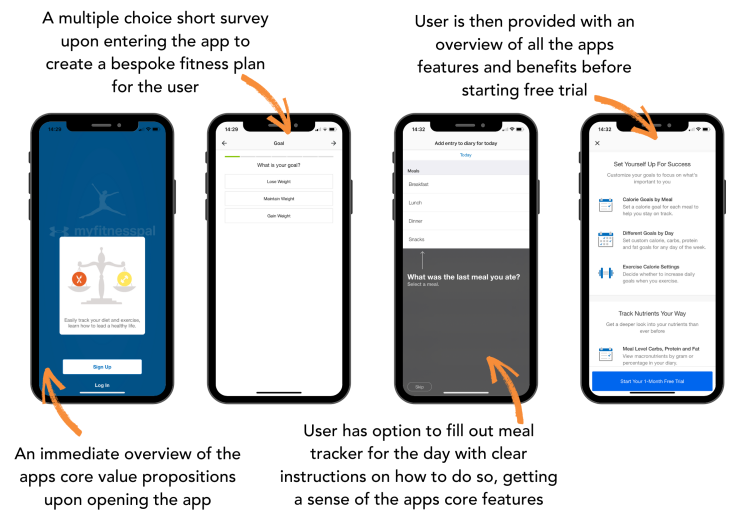This post was updated in July 2021.
Article Summary: Here are five key mobile trends to keep in mind as we head into 2021, brought to you by the team at leading mobile app agency, Yodel Mobile. From an accelerated shift to a mobile-first lifestyle, to calls for more data transparency, make sure you know what to expect from mobile users in the new year.
For business leaders, trying to predict what a new year will bring is always a challenge–and 2021 holds even more uncertainty than usual. The past year, we’ve seen many unexpected trends emerge, we’ve seen companies and consumers defy all expectations, and we’ve seen every element of our daily life and work transform.
As organizations continue to navigate new obstacles and attempt to mitigate the impact of the COVID-19 pandemic, careful planning will be crucial to build stability and minimize uncertainties. In order to plan ahead successfully, businesses need to understand both:
How the mobile market is evolving and
How consumer lifestyles are shifting.
To that end, we’ve assembled a list of the top five mobile trends that mobile app designers and marketers can expect to see in 2021.
Want to take your digital experience to the next level? Let’s chat.
Request your personalized demo of the FullStory Digital Experience Intelligence platform.
1. An accelerated shift to a mobile-first lifestyle
With global restrictions on travel, entertainment, and work, people are increasingly turning to mobile as a channel to complete core tasks efficiently. Your customers are now using mobile apps to learn, shop, network, and even exercise.
The shift to mobile-first has been occurring for several years, but the pandemic exaggerated the speed of this trend in 2020. This dramatic leap forward will likely cause a notable increase in the number of available mobile apps, leading to an increasingly saturated app marketplace. App companies that want to stand out among competitors need to implement an end-to-end marketing strategy that increases app discoverability, user acquisition, and, most importantly, user engagement.
2. Unpredictable spikes and trends across app stores
As people continue to adapt in 2021, app marketers should expect the unexpected when it comes to new trends and spikes across the app stores. You should make sure that your app is ready for potential sudden influxes of users and can mitigate increased drop offs, too.
If there is a rise in users looking for apps in your category, you need to have a proactive plan to ensure that your app is visible on the app stores to avoid missed opportunities. Achieving this means placing a continuous focus on keyword optimization and app store optimization (ASO) to ensure that your app ranks for as many key search terms as possible. Below is a great example from Gymshark:
You should also focus on ensuring that your user journey is seamless; a lack of clarity, complex onboarding processes or existing pain points can cause increases in user drop offs that you can’t afford in a saturated marketplace.
3. The importance of mobile UI/UX optimization
With an increased dependence on mobile and rising consumer expectations for what mobile should provide, it’s critical that your app has an engaging, easy-to-use user journey.
FullStory for Mobile Apps helps you deliver stand-out mobile experiences while respecting end-user privacy.
Earning trust, conversions, and 5-star reviews depends on a great in-app experience. FullStory gives you unprecedented visibility into user engagement, performance, and other crucial factors that determine whether your app hits its revenue goals—or gets uninstalled.
FullStory for Mobile Apps is Private by Default. It helps you understand the overall shape of your user experience without capturing sensitive customer data. Need to record certain text fields for discovery and analysis? Our precise privacy controls let you collect just what you need to improve your product, and no more.
To start, a concise, friendly onboarding process can significantly limit user drop off. New users are unlikely to understand the full value of your app, and will be quick to delete your app if they feel you’re asking for too much intrusive information up front.
Many companies highlight the value of their app with a quick walk-through for new users or by offering limited access before requiring users to sign up. With increased competition in the marketplace, it’s important to build relationships with your users by providing them with a mobile experience that is not just informative, but also interactive, intuitive, and delightful.
MyFitnessPal does an excellent job of engaging the user, allowing them to get a feel for the app and all of its key features before they sign up for a free trial.
It is also important to understand which channels your customers are using. If you have a mobile web presence for instance, you should consider directing users from mobile web to your app—where conversion rates are over three times higher.
One way to do this is via smart banners on your website. A smart banner will automatically determine whether the app is supported on the user’s device. If so, it will direct the user to either the app store listing or to the app if the user already has it on their device. With proper tracking, these banners can provide valuable information as to how many app users came from mobile web.
4. The bid for an increasingly data-transparent future
With increasing consumer awareness and concerns around data usage, there has been a significant shift among big tech companies to be more transparent about user data.
One significant upcoming change is Apple’s depreciation of the IDFA (Identifier for Advertisers). Once introduced, app users will have to opt-in to the IDFA. This means mobile apps will have to request permission to track unique user or device data, in particular device advertising identifiers.
Many third-party tools, such as attribution and analytics platforms, rely on IDFA as their primary method of collecting data; because of this, there will be a significant push to diversify the ways in which data is collected ahead of its depreciation. It is worth noting that some third-party solutions, such as FullStory, already have a privacy-centric model in place, which negates the effects that many other platforms are currently facing.
There are of course other ways of collecting data that fall in line with Apple’s new regulations as well as increasing privacy regulations from governments. This includes being more dependent on probabilistic attribution models—using historical data to determine the probability that an install was driven by one or more campaigns—as well as using predictive power to curate in-app experiences. By widening the net when it comes to the data you choose to track, you can still learn a lot about your users.
You may also have to re-evaluate the growth metrics you track. Whereas before many mobile apps were reliant on metrics that required device identification, such as Cost Per Install, testing out more advanced metrics, such as Cost Per Acquisition (CPA) or Lifetime Value (LTV), may be key to using less precise data to build out a more comprehensive picture of your users.
5. Using consumer-centric marketing to build user loyalty
In order to truly engage your customers, you must humanize the relationship. Users are more likely to react positively to humor and empathetic messaging (especially during times of crisis!), so it’s important to consider incorporating this throughout the full user journey.
My Theory Test by James May is an app that provides users with a fun and engaging alternative to existing theory test apps. James May, well-known for being one of the presenters on the UK TV series Top Gear, is the face of the app and his humor is incorporated into the videos, lessons and training plans—all intended to provide users with a more engaging way of passing their theory test.
Another popular approach is to get personal with users. Customized push notifications that include a user’s name and are specific to their preferences (e.g. based on their search history) can go a long way to improve open rates and drive engagement with your app. Thoughtfully tailored marketing across all channels will help you to build long-lasting relationships with your users.
Planning ahead for mobile app success in 2021
To drive long-term app engagement and remain competitive in an increasingly crowded app marketplace, your company needs to implement a holistic app marketing plan. A successful approach blends organic and paid growth strategies to maximise app discoverability, user acquisition and, most importantly, retention of high-value, loyal users. Proactive planning and testing–and staying on top of mobile trends–are the keys to implementing an effective app marketing plan that drives larger business goals.
To learn more about app marketing and mobile trends, you can read our blog post on understanding the app marketplace or watch our Mastering Mobile Marketing video series.
Want to take your digital experience to the next level? Let’s chat.
Request your personalized demo of the FullStory Digital Experience Intelligence platform.
About Yodel Mobile
Yodel Mobile is the leading app growth consultancy and Mobile Agency of the Year, specialising in launching and scaling apps. We plug in as an extension of our clients’ growth team, with app experts supporting success-driven strategy and implementation to accelerate app growth.






